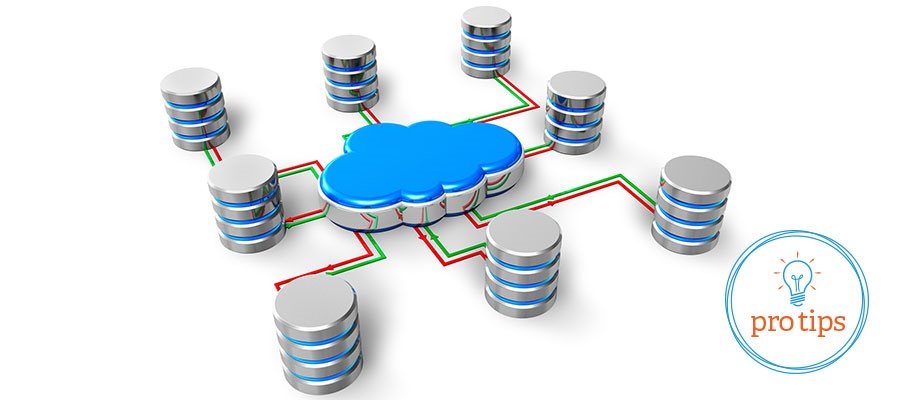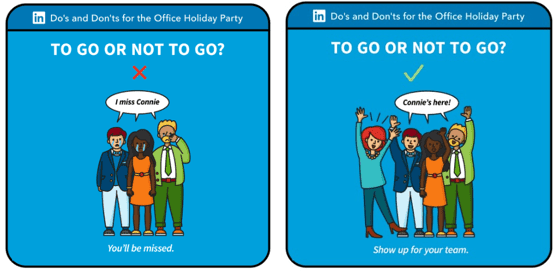|
Remember when paper maps and Thomas Guides were the talk of the town? Throughout the last decade, the advent of GPS has all but killed the humble printed map. In fact, technological advances have executed countless products and services that, a mere 10 years ago, seemed to be the best thing since sliced bread. However, there is one classic that has withstood the test of time. Even with all the new technology, email newsletters are still considered one of the best ways to grow and maintain relationships. According to Nielsen Norman Group, email newsletters remain the Internet’s best tool for supplementing a website. Maybe you already have a newsletter and are looking for ways to spruce it up to reach out to members who seem to be disengaged. Or, it’s your first time to create one and you’re thinking of where to start. Whether you’re a veteran or newbie, these tips will help raise the awesome bar in sending out regular communication to your members. 1. Know your audience
2. Go easy on the eyes You don’t need to be a graphic designer to find a compelling way of presenting content. We have a ton of templates (because who wants to start from scratch?) to help get you started. What’s important is that your message is easily digestible. Keep in mind members will view your newsletter on desktop and mobile devices, so breaking up text with lists, bullet points and pictures are a must. 3. Include impact stories or member highlights For any group or organization, communicating how its success and efforts have made an impact encourages readers to work toward the group’s goals. Highlighting a member of the week or month for their contribution to the community or the organization promotes a sense of camaraderie as well shows appreciation for member’s efforts. Don’t be stingy with your praise – there’s always enough to go around. We agree with the late American philosopher John Dewey, who said, “…I am hearty in my approbation and lavish in my praise.” Nothing will resonate with your members more than when you emphasize an individual’s positive influence on your group and mission. 4. Give fundraising updates and milestones
5. Include membership updates Use email newsletters to update your members on new rules, fee changes, updated responsibilities, and any additional information that your members should be aware of. Email newsletters provide the perfect opportunity for reaching your members with time-sensitive and relevant data that will directly affect their role within the organization. 6. Event updates and recaps Your events are nothing without the support of your members. If your group has a big occasion in the works (whether internally or something that is community-involved), you could possibly dedicate an entire newsletter to featuring that event. The focus of your email newsletters should be to provide quality content and compelling imagery that will help sustain and grow your relationships with your members. Because inboxes get crowded with emails competing for your reader’s attention, newsletters should include content that’s worth their time. Your organization can only go so far without engaging your members, and a successful email newsletter campaign should get your members excited about what’s to come, eager to participate, and interested in receiving updates on how they can stay involved in the organization. Fortunately, you have all the tools (including templates!) at your fingertips to create an email newsletter on memberplanet today. Updated since original publication on 06/02/17.
1 Comment
The Ultimate Event Planning Guide: These 9 Milestones Will Keep Your Event on the Road to Success11/7/2018 When you’re planning an event, are you the kind who likes to roll up your sleeves, set wheels in motion, and plunge headlong into details (logistics)? Or are you more of a visionary, a big-picture thinker who likes to paint with broad strokes (strategic)? Whether you prefer event planning logistics or strategies, or dabbling in a bit of both, these nine milestones and list of pro tips that go along with them are not to be overlooked. We’ve categorized the to do’s as logistic and strategic items, so you can delegate them out to your team members according to their strengths. Note that the milestones may vary for the type of event you’re hosting, but the general rule of thumb is, the earlier you can do them, the better. 12 months out Logistic:
Strategic:
6 months Logistic:
Some organizations create separate event pages dedicated to planning for their upcoming fundraisers. For Delta Gamma Phoenix Alumnae Chapter, this lets administers get a head start for their “Tables that Bloom” annual fundraiser that benefits the Delta Gamma Foundation and its philanthropic endeavors. Tony Marmo, president of the Ulster County Italian-American Foundation, dedicated to advancing and preserving Italian heritage in the Kingston, NY, area, hosts 130-plate dinners each month to raise money for scholarships, cancer treatments, and charities. Each dinner raises as much as $5,000. “You have to create buzz,” Marmo said. “You need an interesting topic or speaker – something to draw a crowd.”
Six months out from your event date might seem like a long time, but remember, you can’t move forward in other areas until after you’ve made many of your creative decisions. 4 months Logistic:
2) Invitation (include a calendar attachment and set a reminder/alert). 3) Reminder message. On your calendar invitation, don’t forget to set an event reminder. Include directions and link to a map if that’s not already on your dedicated event site. On memberplanet, you have a ton of email features at your fingertips, from templates, to targeted distribution lists, to tracking reports. Use them to optimize every email send. In publicity, reminders are essential. Digital Marketing Ramblings reports the average office worker receives 121 emails every day. Because emails are so disposable and we’re all easily distracted due to multitasking, everyone needs multiple reminders. Marmo agreed: “One email sent one time just isn’t going to do it. You’ve got to promote the event and sometimes do it in more than one way.” 3 months Logistic:
Strategic:
2 months Logistic:
1 month Logistic:
2 weeks Logistic:
1 week Logistic:
Follow-up The logistics of strategy We’ve just taken a look at strategy and logistics tasks in planning your event. By understanding which types of planners you and your team members are, you can up your game in any of the areas that need work. Log in and get started with your next event. Updated and Refreshed since original publication on 12/1/2017
You’re trying to make things better at your organization, but it seems like you’re running in circles. You might have even picked up the best tools (ahem … memberplanet) but might not be using them to your full advantage. If you’re ready to pull all your hair out, read this for some membership-management relief. 1. Automate your membership Make it easy for members to join your organization. A prospect is ready to commit to an annual membership to your organization. Hopefully, you've set up the application process so it's convenient for those who are joining as well as administrative users like yourself who manage this process. Take the time to set up your membership tiers or levels and post links in easily accessible places, such as your website and social media pages. A new member will only have to click to get started, fill out your forms online, and make an online payment - which is much more convenient than picking up the phone to call you or having to mail paper forms and a check. If it's necessary for your application process to be more manual than automated, you can set up email notifications to go to the right admins when someone does submit an application. Give the option to automatically renew membership. Your members won’t always remember (or want) to manually take money out of their paycheck to pay membership dues. No matter how much they love you and your cause, making it inconvenient for your members to part with their money is painful, so give them the convenient option of an automatic payment plan. For members who opt to pay manually, or those who are past due, enable automated reminder emails to keep them informed. You can also customize these emails and target members using levels, types, and auto-renew statuses. Email campaigns can also be tailored to members based on other variable data, such as an event RSVP or amount donated. memberplanet users: Here are support documents on how to set up membership levels if you haven’t already. Smart Lists allow you to segment your distribution lists so you can target your communication based on variable data. Use the membership tools to your advantage to set up automatic renewals, offer free memberships, and more. 2. Get mentally organized to save time and boost productivity Take a step back, clear your mind, and get organized. There are a lot of excellent organization tips online, such as Entrepreneur’s 10 tips for work life. Here are our own specific to-do items that directly apply to managing your organization:
Now that you’ve got some targets, recognize the fact that you’re not likely to hit them unless you use a calendar. Whether it’s a smartphone app or a physical appointment book, a calendar is great way to get organized and hit consistent deadlines. Note to memberplanet users: Our free app allows you to accomplish admin tasks on the go. If you find yourself tied to your desktop most of the time, download it on the App Store or Google Play and give it a whirl.
3. Delegate the right tasks – and know which ones to do yourself Delegation is simple – but if you’re not doing it right, you could be wasting even more valuable time. First, you need to identify the tasks you should delegate and the ones you shouldn't. Here’s some of the best stuff to pass off:
If you can't automate a task, ask yourself: Can it be delegated? It’s important to let go of some of these jobs, even if you love or have gotten used to doing them. memberplanet users: You can assign an unlimited number of admins. Share the load with those who can take on the responsibility and use admin role management to set necessary permissions. Whether your organization has 200 members or 200,000, it pays to stay organized, as well as to make sure the memberships you offer are flexible and diverse enough to attract a variety of supporters. Managing membership can be tough, but it doesn’t have to be a stressful experience. Updated since original publication on 07/17/17.
Henry David Thoreau once wrote, “Our life is frittered away by detail. Simplify, simplify, simplify!” Yet people grow. Things change. Member details multiply. If you're an admin, you know the last part of that equation: They expect you to organize and update all that information. So, before you Thoreau that laptop straight into the parking lot, read how memberplanet makes updating your member database a breeze. 1. Eliminate inefficiencies Technology should drive efficiency, not the user insane. When you're adding new information, or updating the old stuff, you want your process to be as efficient as possible. For example, many group leaders spend time manually logging data from difficult-to-read handwriting from sign-up sheets at events or follow-up calls to members; with memberplanet, this information can be added by your members themselves. Members have their own dashboard they can securely log in to update account info. They can control and manage their own data, edit privacy settings, update payment methods, and more. 2. Make it easy for your members to update their own account For some members, logging into their account is a roadblock. Lucky for you and them, there’s a way to make their lives (and yours) easier. You can send a profile update request email from the platform, which allows the member to update their account information directly from the email. Whatever changes they make automatically enter the secure database – without the need to log in. Compare that to chasing members for updates in person, through surveys, or by standard email, where they don't have a fail-safe way to add information. Those options are old school and force the member to remember another password. The less hassle on the member’s end and the less data entry for you, the better. 3. Seize the ideal periods to ask for updates
There’s no particularly bad time to check up on your members to see if anything has changed for them. But there are key intervals you should use to get updates from members. Is the end of the year approaching? Check in with your members and stay informed of their plans for the new year. Are you making a change to your membership terms or levels, or are you gearing up for a big event or campaign? Make sure your member information is current before taking the leap. Periodic check-ins to see if members have any updates to their profile information, including essential contact information, is a terrific way to keep your data current. Best practices for asking are every quarter, before graduation, and at the end of the school year. memberplanet helps keep your database tidy The key to any successful member communication strategy is having accurate, relevant information about your members. The software makes it easy – just schedule profile update requests at key intervals and the member will have a link that takes them straight to their profile. Simplified, simplified, simplified! Thoreau would be pleased. Start making your database fantastic by signing into your memberplanet dashboard today. Fundraising is the act of raising funds for a cause or a mission. And although that sounds straightforward and simple, the act itself can be, well, anything but. If you’ve run a fundraiser, you know what we’re talkin’ about. But the key to success remains pretty simple: You must create a strategic plan and stick to it. No matter what goal you’re working toward as a group leader, follow these fail-safe tips and with research, a dab of creativity, and (possibly) a bit more elbow grease, you’ll be surprised at how much you can accomplish! 1. Set your goals Before getting into the nitty-gritty details, you need to take a hard look at the big picture – and that begins with figuring out your purpose. Defining a clear, measurable goal is the foundation of a successful plan. Here are a few things to think about when setting that bar:
It’s okay to be ambitious with your goals, but it’s also important to determine what’s realistic. Shoot too high and you could end up spreading resources too thin. Now it’s time to write the fine print of your plan. 2. Give your donors the option to donate online Offline (check and cash) donations are still essential for any fundraising effort, but online is quickly gaining ground when it comes to raising money. It’s all about convenience. Every additional step it takes to give – like writing a check, finding an envelope, and rummaging through a desk for stamps – creates the potential for donors to get distracted: Where did I put my checkbook? Oh look – here’s my coffee mug! I’ll find my checkbook later. It’s time for another cup. See my point? Check out how much funds Wittmann Elementary School raised in its third year of offering an online payment option: Total PTA Membership Fundraising for 2016-2017: $35,655 Offline Fundraising via Checks and Cash: $8,120 Online Fundraising via memberplanet: $27,535! (Read the full Wittmann case study.) 77 percent of funds were raised online with memberplanet’s platform. And that’s just one example. The Chronicle of Philanthropy conducted a survey of 100 leading nonprofits and found that internet fundraising grew by about 13 percent year over year in 2014. Bottom line: If you’re not using online giving features, you’re missing out on a big chunk of cash today, and even more tomorrow. 3. Delegate responsibilities Shared responsibility is crucial to holding a successful fundraiser, because one person (you) cannot manage everything. Delegate most of the effort so that the event itself can go off without a hitch while you oversee the big picture.
If you are planning an event, designate an event committee to book vendors and locations, and make sure you’ve paid any fees or permits if it is being held in a public place. If possible, research backup vendors and another location in case your first location doesn’t work out. Plan a dry run (especially helpful if you expect a large amount of attendees). 4. Get the word out In order to conduct a truly successful fundraiser, you will want to make sure that people actually know about it. Create a campaign schedule:
Note to memberplanet users: You can also encourage your members to create their own supporter pages for the cause, which makes their campaign efforts more personal and effective.
5. Execute the plan With so much preparation, planning a fundraiser can seem overwhelming. But the pay-off is worth it. You’ve worked hard to design a great event, so try to sit back and enjoy the magic. Once the fundraising is underway, make sure that each of your delegated tasks is being tended to. Part of your plan should include periodic check-ins with those overseeing key tasks. The engagement, tracking, and logistical back-work does not end when the effort begins. If you see that your fundraiser is falling short of your goals, re-allocate resources or make adjustments to your goals. 6. Analyze the aftermath Whether your fundraiser exceeded your wildest expectations – or it wasn’t quite what you expected – it’s important to meet with your team to determine what went well, what didn’t, and what you can do next time to improve. Detailed tracking is essential for the post-game debrief. 7. Say thank you Thank your team, donors, partners, sponsors, and other benefactors. It’s super easy to use Smart Lists on memberplanet’s Pro and Premium plans to send a targeted email (templates included!) to all your donors to express gratitude. If you held an event, be sure to include a sharable photo album (show the impact!) to strengthen that connection with supporters. Holding the ultimate fundraiser isn’t magic – it’s a combination of hard work, team effort, strategic planning, testing, and creativity. Whether you’re an organization with 20 volunteers or a 10,000-member medical society, following these rules will put you on the path to success. Log in to get started on your next fundraising campaign.
The new year is here and that means food, family, and, if you're following a calendar-year contract, member renewals. While holiday breaks and transition periods are often a great time to tie up any loose ends within your organization (thank you, extra time off!), people tend to have extra busy schedules during this time. As a leader of an organization, it’s very possible that you’ve seen a drop in member retention and engagement rates during this time of year. So the question is how do you retain members and keep them engaged during a period of transition, whether it be the new year or end of a quarter? We’ve talked to a bunch of group leaders who’ve successfully battled the member retention issue. How did they do it? By focusing on many of the same best practices they focus on during the rest of the year: showing members the value of being part of the group and keeping them interested. That was made a whole lot easier by using memberplanet, and we’ve compiled their tips and best practices below. Here are four ways to ensure your members remain loyal 'til their dying day.  1. Make it easy to stay a member We go shopping online, look up cooking recipes, and even date online. It just makes sense to simplify membership by making it easily accessible online as well. If you aren’t doing this already, offer online dues payments with automatic or early membership renewal. Think of it this way: Every time you send your members looking for their checkbooks to mail in a payment, you’re creating a hurdle (and it’s an especially bigger one during a time of transition). Renewing membership should be as easy as a click of a button, and automatic online renewals means members don’t have to think twice about making a commitment to your organization. Providing them with mobile access is even better. (We have a custom mobile app for that!) 2. Offer incentives The holidays present the perfect time to introduce an opportunity to give free gifts, whether it’s branded swag, an extra raffle ticket for a gift card giveaway, or discounted rates for membership renewals. We love free stuff, and your members are the same way. Your incentives can vary, but showing your members how much you appreciate their involvement is essential. Consider membership length and added value for members who have been with your organization for a certain amount of time. 3. Round up the troops Everyone loves a good gettogether — it's a great way to show appreciation to members. Make it fun, invite family members, and encourage people to branch out and meet people they've never spoken to before. Bottom line: Show them the love. Sending out invites and allowing your members to RSVP online is one of the easiest ways to get them to come. Want to send out a quick reminder before the par-tay? Our built-in Broadcast feature allows admins to draft a message once and send it to their group via email and text message simultaneously. Extra pro tip: After the event, update your event page with photos and videos, and share it with attendees so they won’t have to hunt for pics. 4. Re-engage your members with a philanthropic cause Giving back to the community is a great way to re-engage your members, because the entire year is ripe with occasions for giving back. It's also a great bonding experience to do so as an organization. Giving makes people feel good, so facilitate the process. Hold an annual charity drive, or get all your members together for a charity experience. Doing little things like this will show your members that you care about the bigger picture and are willing to put in the work to make the world a better place. 5. Communicate your group’s impact to your members Whatever good you end up doing, inform your members through multiple channels (email, text, social media). Send thank you emails to your members for participating, and share your post campaign results. For example, if you reached your fundraising goal for a holiday toy drive for an animal shelter, let your group know, and send them pics of the furry friends the toys went to. Effective communication, in turn, will drive home the message that your members are significant in making an impact. memberplanet makes it easy to do all these things mentioned. Log in to get started.
|



























